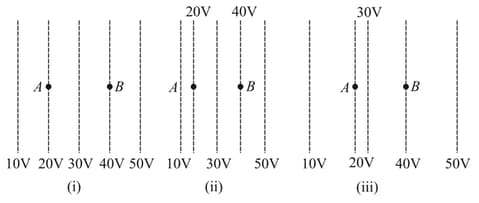EASY
JEE Main
IMPORTANT
Earn 100
Consider two concentric spherical surfaces with radius and with radius , both centred at the origin. There is a charge at the origin and there are no other charges. Compare the flux , through with the flux , through .
(a)
(b)
(c)
(d)
50% studentsanswered this correctly

Important Questions on Electrostatics
EASY
JEE Main
IMPORTANT
EASY
JEE Main
IMPORTANT
EASY
JEE Main
IMPORTANT
EASY
JEE Main
IMPORTANT
EASY
JEE Main
IMPORTANT
EASY
JEE Main
IMPORTANT
Figure shows some equipotential lines distributed in space. A charged object is moved from point to point .

EASY
JEE Main
IMPORTANT
EASY
JEE Main
IMPORTANT
An electric field is given by . What is the potential at the point if the potential at a point is taken to be zero?
